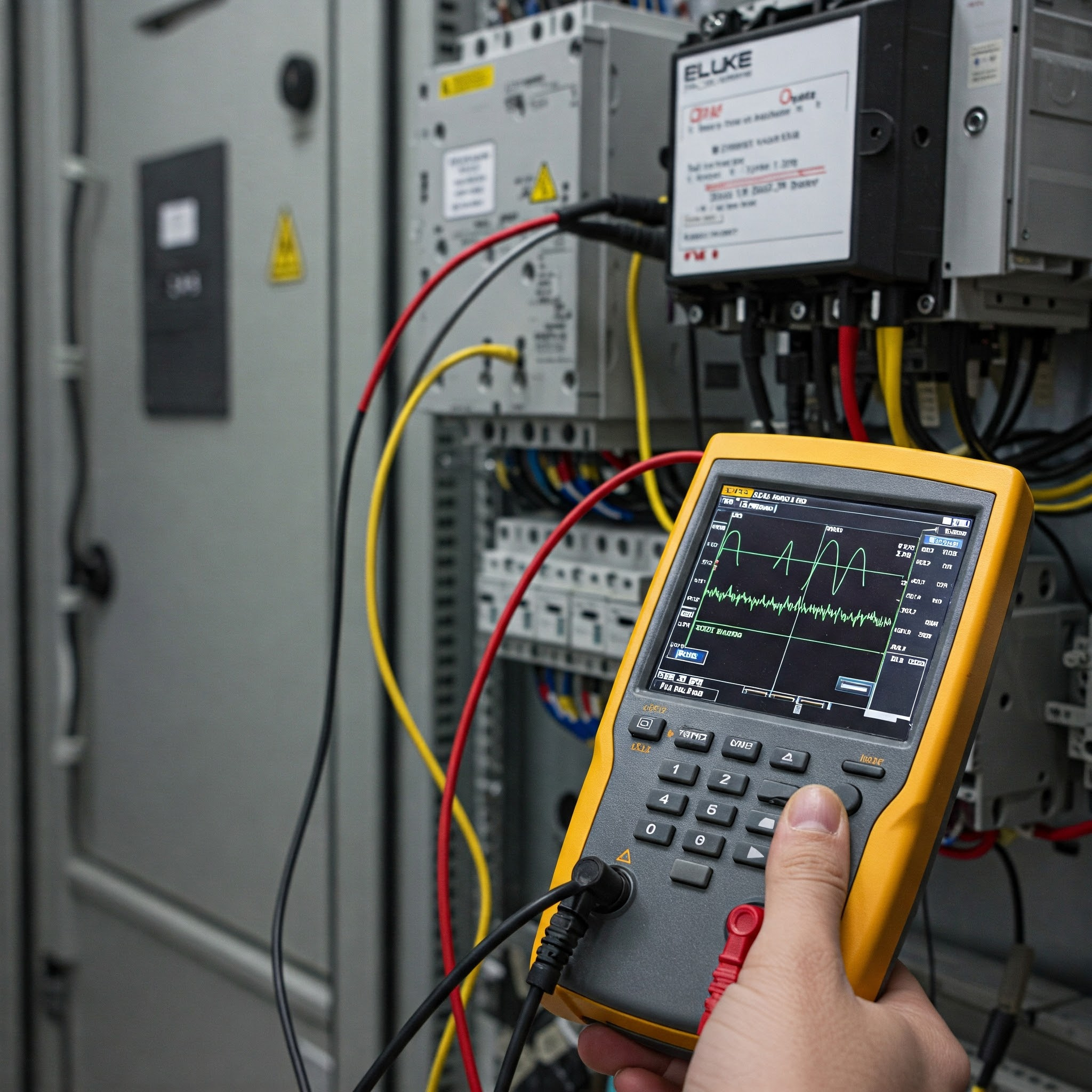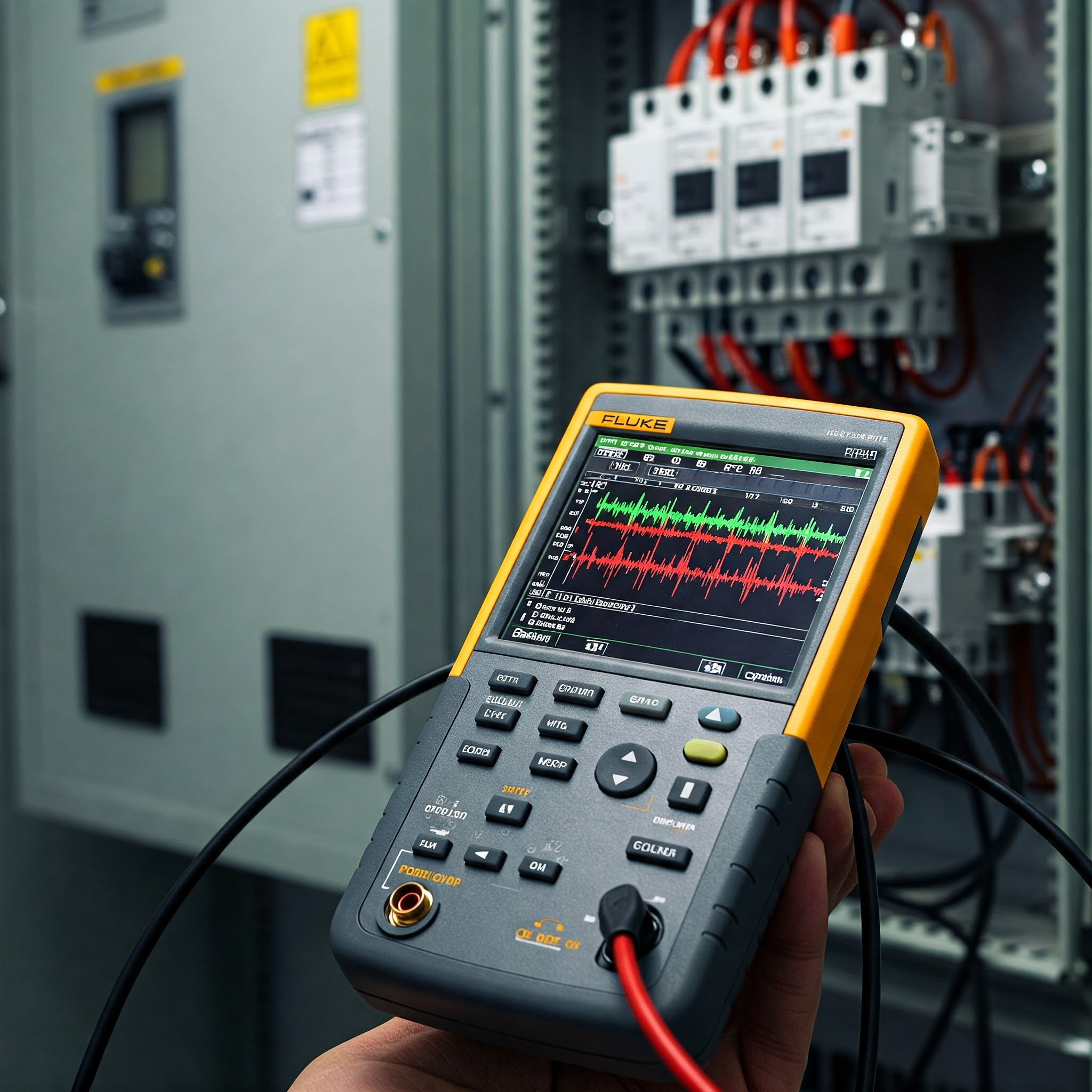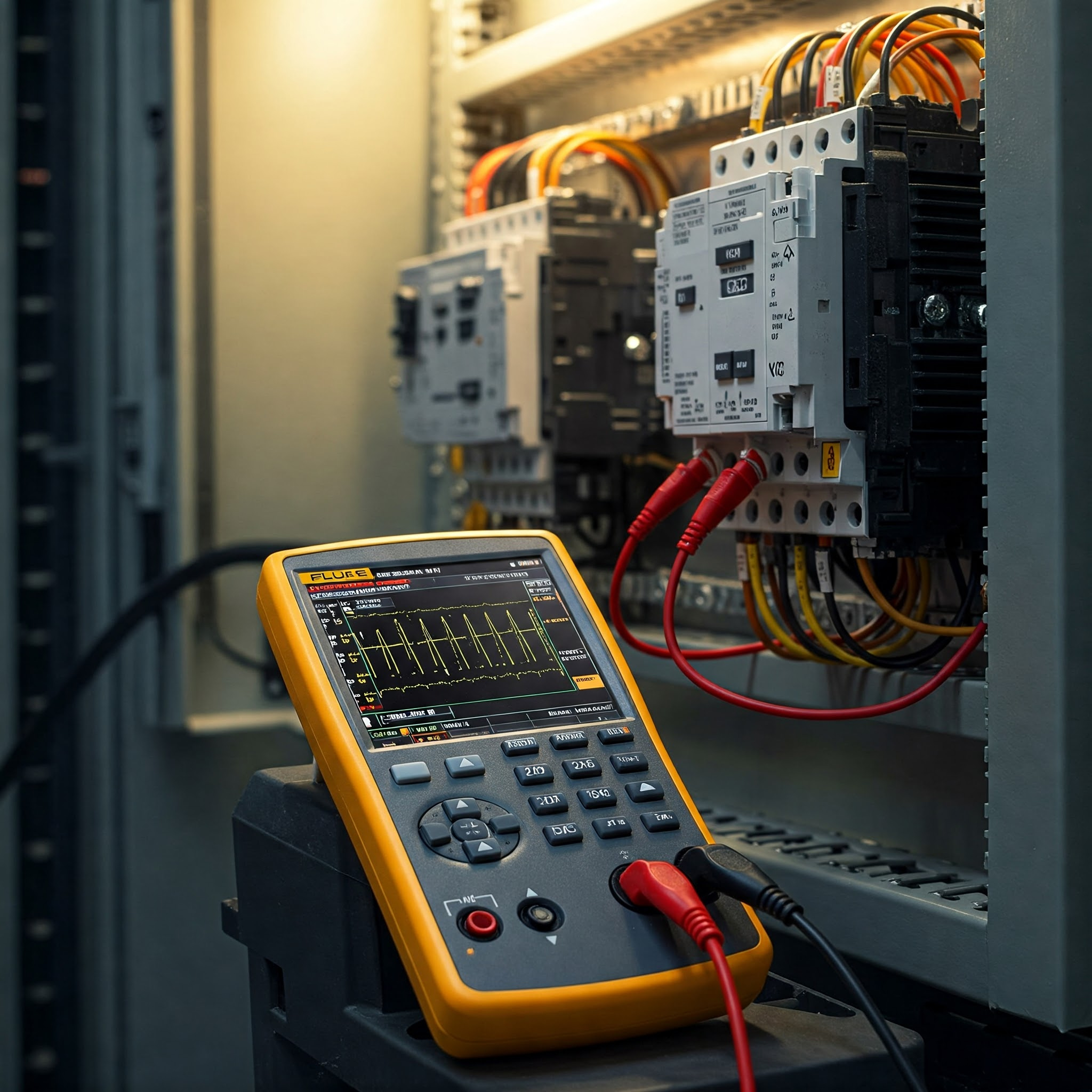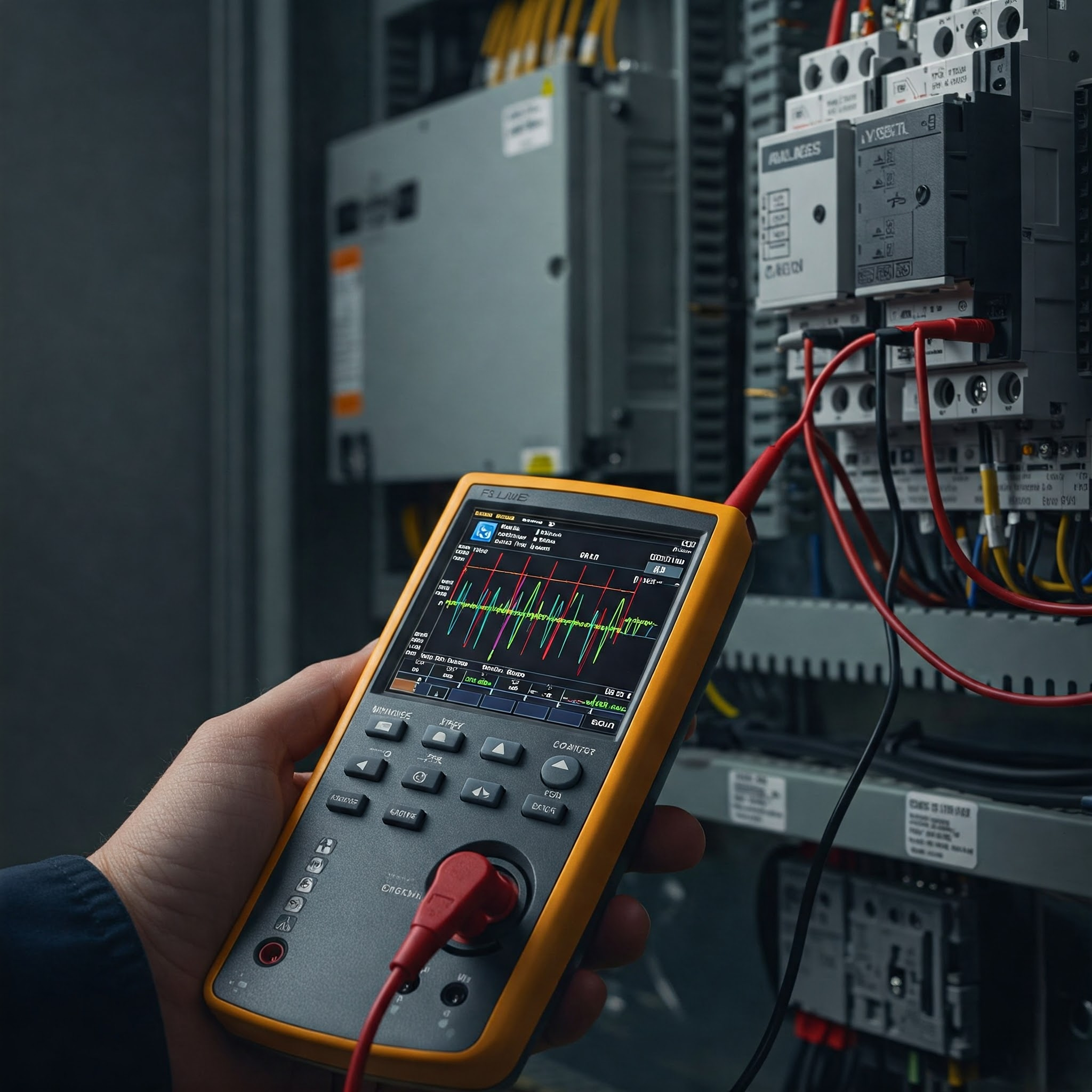Why should a power quality check be an essential part of your routine maintenance?
Imagine that your electrical system is the lifeblood of your organization. If this lifeblood suffers from hidden problems, it could lead to:
- Unexpected downtime: Critical equipment suddenly fails, resulting in lost production and revenue.
- Equipment damage: Motors and transformers overheat, greatly reducing their lifespan.
- Increased energy consumption: Inefficient performance leads to electricity bills that are much higher than they should be.
- Performance problems: Unstable equipment performance, such as motor vibration or control problems.
- Safety Hazard: Overheating of conductors or equipment may result in fires or electric shocks.
A power quality analyzer is your personal doctor for your electrical system!
This advanced device not only measures voltage and current, but also delves deeper into the “health” of the electrical signal, revealing hidden problems that cannot be seen with the naked eye or traditional measuring devices.
What can a power quality analyzer detect?
• Harmonics: Distortions in the sine waveform of voltage and current, caused by modern electronic devices (such as variable frequency drives, uninterruptible power supplies (UPS), and LED lighting). Harmonics can cause equipment overheating, communication interference, and malfunctions in sensitive equipment.
• Swells and Sags: Temporary changes in voltage value that can cause malfunctions in sensitive electronic devices or cause them to restart unexpectedly.
• Flickers: Rapid and frequent changes in light intensity, which can cause discomfort to workers and cause problems with some equipment.
• Load Unbalance: A significant difference in currents between the three phases of a three-phase system can cause motors and transformers to overheat and reduce their efficiency.
• Low Power Factor: Indicates inefficient energy use, leading to increased grid losses and increased energy costs.
Benefits of using a power quality analyzer in routine maintenance:
• Early detection of problems: Identify potential problems before they escalate and lead to costly breakdowns and unexpected downtime.
• Improve energy efficiency: Identify sources of energy loss and take corrective action to reduce electricity consumption and save costs.
• Extend equipment life: Maintain equipment in optimal operating condition and reduce stress on it, extending its lifespan.
• Improve system performance: Ensure equipment operates at peak efficiency and reduces power quality issues.
• Faster and more accurate fault diagnosis: Provide detailed data to help quickly identify and resolve the cause of the problem.
• Ensure electrical system safety: Detect problems that may pose a safety risk and take preventative action.
• Standards compliance: Ensure your facility’s power quality complies with local and international standards.
Disadvantages of not using a power quality analyzer in routine maintenance (risks):
• Ignoring hidden problems: Power quality issues go undetected until they cause major and costly outages.
• Increased likelihood of unexpected downtime: The inability to predict potential problems leads to unpleasant surprises and a negative impact on production.
• Increased long-term maintenance costs: Fixing major failures is much more expensive than detecting and resolving small problems early.
• Reduced equipment lifespan: Continued operation of equipment under poor power quality conditions leads to premature wear and tear.
• Increased energy consumption and costs: The inability to identify the sources of power losses leads to continued high electricity bills.
• Difficulty in diagnosing faults: When a fault occurs, it can be difficult to determine the root cause of the problem without power quality analysis data.
• Increased safety risks: Ignoring electrical problems increases the likelihood of accidents.
Conclusion:
A power quality analyzer isn’t just another measuring tool; it’s a necessary investment to ensure the health and efficiency of your electrical system. Incorporating it into your routine maintenance program provides you with a clear view of the health of your electrical network, helping you avoid costly problems, improve performance, and ensure safety.
Don’t wait until a problem occurs! Be proactive and protect your investment by regularly checking your power quality.




